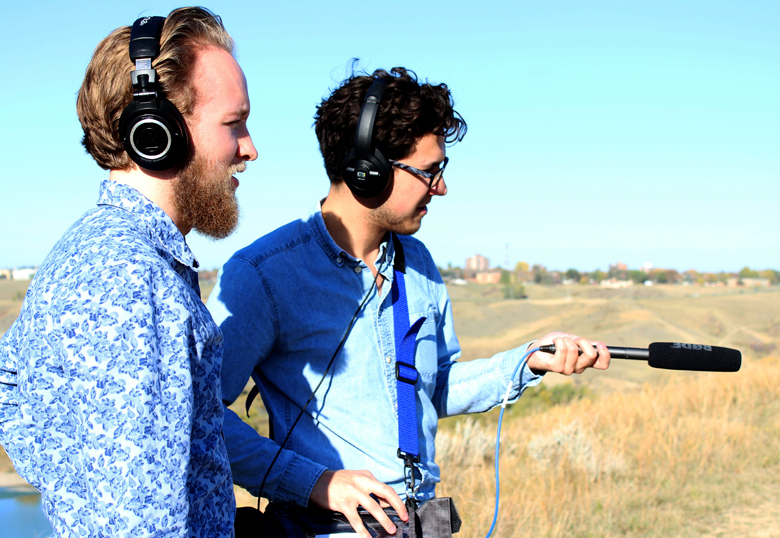Our sonic environment is composed of hundreds of different sounds that range from breathing, to traffic, to children’s voices at the playground down the street. For the average listener, these sounds blend together to create static background noise, which is easy to ignore.

Alex Bohn and Max Hopkins have learned to hear things differently and encourage others to do so as well.
“We want to show people that active listening is cool,” says Bohn.
These two Digital Digital Audio Arts (DAA) majors find themselves one step closer to achieving their goal since they won the 2015 Joyce and Ron Sakamoto Prize for Research in the Digital Audio Arts. Recipients are awarded a prize of $5,000 to fund their research over a period of eight months and must present their findings in the form of a presentation or composition.
Designed to strengthen research excellence within the DAA program at the U of L, this award offers a unique opportunity for DAA majors to expand their research experiences as undergraduate students.
“This opportunity adds another element to our degree,” say Bohn, who with Hopkins was attracted to the Bachelor of Music Degree with a major in Digital Audio Arts because of its hands-on experience and the unique educational opportunities it provides.
Focusing on three key areas in southern Alberta, the pair are recording and isolating various sounds from those acoustic environments. They call their research endeavour the IntraEnvironmental Sound Project (IESP).
The project starts in Banff, moves to downtown Calgary and concludes on the U of L campus. The pair is using active listening to find the sounds they want to capture, developing a technique for capture, then taking these recordings and mapping them to their respective geographic regions. The recordings will then be made available to the public for free use.
Hopkins and Bohn found the inspiration for their project through NASA Sounds and the Montreal Sound Map, which also focus on capturing individual sounds within an environment.
“We were just spitballing ideas right around the time that NASA Sounds came about. We felt a draw to natural sound – getting a feel for where everything comes from. A lot of people don’t pay attention to what they hear and we can increase awareness by capturing a slice of that for them,” says Bohn.
The extent of some similar projects is to simply record the found sounds, but the goal for this duo is to take their research a step further by creating an interactive experience for others through public databases and original compositions containing only the sounds they have isolated and recorded.
“For example, maybe someone hammers on a pipe in downtown Calgary – you could use that sound as a drum beat,” says Bohn.
The scope of their project goes deeper as Bohn and Hopkins explore not only isolated sounds, but whether those sounds seem natural to the environment.
“It’s also about looking at what does not fit. We are aiming to create context,” says Hopkins.
Ultimately, users of their sound map will be able to download recordings and use them for their own projects through icons matched to their respective region.
Bohn and Hopkins plan to get underway by the end of October 2015, after some trial runs in downtown Lethbridge. You might also spot them walking the University corridors recording and listening for just the right sound.
Follow this creative duo on their journey through Instagram (instagram.com/the_i.e.s.p), or on Facebook (The IntraEnvironmental Sound Project).
